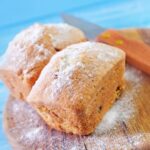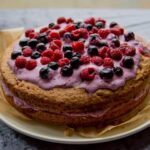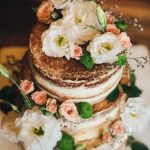Are you looking to elevate your cake decorating skills with a rich and luscious icing? In this article, we will explore the art of creating thick icing for cake decorating. Discover the essential ingredients and equipment needed, as well as expert tips for achieving the perfect consistency. Whether you’re a beginner or an experienced baker, mastering the technique of making thick icing is key to creating stunning cakes that will impress any crowd.
When it comes to cake decorating, the type of icing used can make all the difference. Thick icing provides stability and structure, allowing for intricate designs and smooth finishes on your cakes. From piping intricate patterns to creating decorative borders, having a reliable and thick icing is essential for any baker.
In this comprehensive guide, we will delve into the step-by-step process of making thick icing from scratch, as well as troubleshoot common issues that may arise during the process. Additionally, we will explore various flavoring options to add a personalized touch to your creations. Get ready to take your cake decorating skills to the next level with our expert tips and techniques for working with thick icing.
Ingredients
When it comes to cake decorating, having the right ingredients is essential for creating thick icing that will hold its shape and provide a beautiful finish to your confection. Here are the key ingredients you’ll need to make thick icing for cake decorating:
- Confectioner’s sugar: Also known as powdered sugar, this fine sugar is essential for creating a smooth and creamy texture in your icing.
- Unsalted butter: Using unsalted butter allows you to control the amount of salt in your icing, and it also adds richness and flavor.
- Vanilla extract: A touch of vanilla enhances the flavor of your thick icing, providing a delicious backdrop to your cake’s design.
- Milk or heavy cream: These liquids are used to adjust the consistency of your icing, making it easier to spread and pipe onto your cake.
In addition to these primary ingredients, you may also want to consider using food coloring or flavor extracts to customize the look and taste of your thick icing. Keep in mind that the quality of your ingredients can impact the final result, so using high-quality butter and pure vanilla extract can make a difference in the overall flavor and texture of your icing.
To ensure success in making thick icing for cake decorating, gather all of your ingredients before starting and measure them accurately for the best results. With these key components on hand, you’ll be well-equipped to create beautiful and delicious decorative designs for all of your cakes. Now that you know what you need let´s move on how put all together.
Equipment
When it comes to creating thick icing for cake decorating, having the right equipment is essential to ensure that your icing turns out as desired. Here are some essential tools that you will need in order to create the perfect thick icing for your cake decorating projects.
First and foremost, a good quality stand mixer or handheld electric mixer is a must-have when making thick icing. The powerful motor and various speed settings make it much easier to achieve the perfect consistency for your icing. Using a whisk attachment can also help incorporate air into the icing, making it lighter and fluffier.
Another important tool for creating thick icing is a set of rubber spatulas. These will come in handy for scraping down the sides of the mixing bowl and ensuring that all ingredients are well combined. They are also useful for folding in any additional flavorings or add-ins, such as extracts or food coloring.
Piping bags and decorating tips are crucial for applying thick icing to cakes and other baked goods. Invest in a variety of decorating tips to achieve different designs and textures with your icing. Having a sturdy piping bag that can withstand the pressure of thick icing is important to prevent any bursting or splitting while piping.
In addition, having offset spatulas of various sizes is essential for spreading and smoothing thick icing onto cakes. These spatulas allow for precision and control when working with thicker consistencies, helping you achieve professional-looking results.
With these essential tools on hand, you’ll be well-equipped to create beautiful decorations using your homemade thick icing.
The Basic Recipe
Creating thick icing from scratch is an essential skill for any cake decorator. Whether you’re a beginner or an experienced baker, having the perfect thick icing can make all the difference in the appearance and taste of your cakes. In this section, we will provide a step-by-step guide on how to make thick icing for cake decorating.
To make thick icing from scratch, you will need the following ingredients:
- Confectioners’ sugar (powdered sugar)
- Unsalted butter or shortening
- Vanilla extract or other flavorings (optional)
- Milk or heavy cream
Once you have gathered all the necessary ingredients, follow these steps to create your thick icing:
- Start by sifting the confectioners’ sugar to remove any lumps and ensure a smooth consistency.
- In a mixing bowl, cream together the unsalted butter or shortening until it is smooth and creamy.
- Add in the sifted confectioners’ sugar gradually, mixing well after each addition until fully incorporated.
- If desired, add in vanilla extract or other flavorings to give your icing a personalized touch.
- To achieve the desired thickness, gradually add milk or heavy cream to the mixture while continuing to mix until you reach your preferred consistency.
By following these steps, you can create a delicious and thick icing that is perfect for cake decorating. Experiment with different flavors and consistencies to find what works best for your creations.
Tips and Tricks
Consistency Is Key
One of the most important aspects of making thick icing for cake decorating is achieving the perfect consistency. The right consistency will ensure that your icing holds its shape and doesn’t run or melt off the cake. To achieve the ideal thickness, it’s essential to pay attention to the ratio of ingredients and the mixing technique.
Gradual Adding of Liquid
When making thick icing, it’s crucial to add liquid, such as milk or water, gradually. This allows you to control the thickness of the icing and prevent it from becoming too thin. Start by adding a small amount of liquid at a time and mix thoroughly before adding more. This gradual approach will help you achieve the desired thickness without overdoing it.
Testing for Consistency
To ensure that your icing has reached the perfect consistency for decorating, perform a simple test. Take a small amount of icing and spread it on a plate or parchment paper. If the icing holds its shape and is easy to spread without running, then it’s ready for decorating. If it’s too thick, gradually add small amounts of liquid until you reach the desired consistency.
By following these expert tips, you can be confident in creating thick icing that is perfectly suited for cake decorating. Paying attention to consistency and using a gradual approach to adding liquid will help you achieve professional results every time.
Flavoring Options
When it comes to cake decorating, thick icing not only provides a sturdy base for decorations but can also be the canvas for a world of flavors. Adding flavor to your thick icing can take your cake to the next level, making it not only visually appealing but also a delight for the taste buds. Whether you prefer classic vanilla or want to experiment with more exotic flavors, there are endless options for personalizing your thick icing.
Classic Flavors
For those who love traditional flavors, vanilla, chocolate, and almond are popular choices for adding a familiar and comforting taste to your thick icing. These classic flavors can complement a wide range of cake flavors and add a touch of nostalgia to your creations.
Exotic Flavors
If you’re feeling adventurous, consider experimenting with more exotic flavors such as passion fruit, lavender, or coconut. These unique flavors can bring an unexpected twist to your cake decorating and make your creations stand out from the crowd.
Savory Options
For a truly unique flavor experience, consider incorporating savory ingredients like matcha green tea or espresso into your thick icing. These bold and unexpected flavors can create a sophisticated and memorable dessert that will surprise and delight your guests.
The key to successfully adding flavor to your thick icing is balance – you want the flavor to complement the overall taste of the cake without overwhelming it. Experiment with different flavor combinations and adjust the amount of flavoring until you achieve the perfect balance for your personalized creations.
Using Thick Icing
Thick icing is a versatile and essential element in cake decorating, providing structure and decorative opportunities. From creating intricate designs to adding dimension to your cakes, thick icing can elevate the overall look and taste of your creations. In this section, we will explore various techniques for applying and decorating with thick icing, giving you the skills to take your cake decorating to the next level.
When it comes to applying thick icing to your cake, it’s important to start with a smooth and even base. Using a spatula or offset palette knife, begin by spreading a thin layer of icing over the entire surface of the cake. This initial layer, known as a crumb coat, helps seal in any loose crumbs and provides a clean canvas for additional layers of thick icing.
To achieve precise designs and decorations with thick icing, piping bags and tips are essential tools. Whether you’re creating intricate borders, writing messages, or adding floral accents, different piping tips can help you achieve various textures and shapes. Experiment with round tips for dots and beads, star tips for rosettes and shells, or petal tips for delicate flower petals. By mastering these basic piping techniques, you can bring your creative ideas to life on your cakes.
In addition to using piping bags and tips, exploring other methods such as stenciling, combing, or sculpting with thick icing can add depth and visual interest to your cake designs. By incorporating these techniques into your cake decorating repertoire along with the right consistency of thick icing mentioned in our earlier section “Perfect Consistency for Cake Decorating,” you can create visually stunning cakes that are not only beautiful but also delicious.
| Techniques | Description |
|---|---|
| Crumb Coat | A thin layer of icing that seals in crumbs and provides a smooth base for additional layers. |
| Piping Tips | Various piping tips can be used to create different textures and shapes such as dots, rosettes, shells, flowers. |
| Alternative Methods | Stenciling, combing or sculpting can add depth and visual interest to cake designs. |
Troubleshooting
When it comes to cake decorating, having the right consistency of icing is crucial. However, there are times when things don’t go as planned and you encounter certain issues with your thick icing. It’s important to know how to troubleshoot these common problems and fix them so that your cake decorating can still turn out beautifully.
One common issue when making thick icing for cake decorating is that it turns out too thin or runny. This can happen if you add too much liquid or if the temperature in your kitchen is too warm, causing the butter or shortening in the icing to soften too much.
To fix this issue, you can gradually add more powdered sugar to thicken the icing until you reach your desired consistency. You can also try placing the icing in the refrigerator for a few minutes to firm it up before using it for decorating.
Another issue that may arise is air bubbles in your thick icing, which can make it difficult to achieve a smooth finish on your cake. To remedy this problem, gently tap the bowl of icing on the countertop to release any trapped air bubbles. You can also use a spatula to press out any bubbles when spreading the icing onto the cake.
Sometimes, your thick icing may become too stiff and difficult to work with, especially if it has been sitting for a while. If this happens, simply give the icing a good stir or knead it with clean hands to soften it up again. If needed, you can also add a small amount of milk or cream to loosen up the consistency of the icing without making it too runny.
Knowing how to troubleshoot and fix common issues when making thick icing for cake decorating is essential for every baker and decorator. By being prepared to address these challenges, you can ensure that your finished cakes will always look professional and polished, no matter what obstacles may arise during the decorating process.
Conclusion
In conclusion, learning how to make thick icing for cake decorating is a valuable skill for any aspiring baker or pastry chef. The ability to create a smooth, sturdy icing that holds its shape is essential for beautifully decorated cakes and treats. By understanding the importance of thick icing and following the basic recipe with the right ingredients and equipment, anyone can achieve professional-looking results.
When making thick icing for cake decorating, it’s important to remember that consistency is key. Expert tips such as gradually adding in powdered sugar and adjusting the amount of liquid can help you achieve the perfect thickness for your icing. Additionally, incorporating flavoring options into your thick icing can add a personalized touch to your creations and elevate the overall taste experience for your customers or guests.
As you continue to experiment with different techniques for applying and decorating with thick icing, don’t be discouraged by any common issues that may arise. With proper troubleshooting methods, such as incorporating additional powdered sugar or adjusting the temperature of your ingredients, you can easily overcome any challenges. Ultimately, mastering the art of creating thick icing for cake decorating will allow you to take your baking skills to new heights and impress others with your delectable creations.
Frequently Asked Questions
How Do You Make Icing Thicker for Decorating?
One way to make icing thicker for decorating is to gradually add powdered sugar to the frosting until you reach the desired consistency. Another method is to mix in a small amount of cornstarch or meringue powder.
How Do You Make Can Icing Thick and Fluffy?
To make canned icing thick and fluffy, you can whip it with a hand mixer or stand mixer for a few minutes. Adding a bit of powdered sugar can also help thicken and fluff up the canned icing.
What Is the Thick Icing on a Cake Called?
The thick icing on a cake is typically called buttercream icing or frosting. This type of icing is made from butter, powdered sugar, and flavorings like vanilla extract or cocoa powder. It’s commonly used for decorating cakes and cupcakes due to its thickness and creamy texture.

Welcome to my blog about home and family. This blog is a place where I will share my thoughts, ideas, and experiences related to these important topics. I am a stay-at-home mom with two young children. I hope you enjoy reading it! and may find some helpful tips and ideas that will make your home and family life even better!





